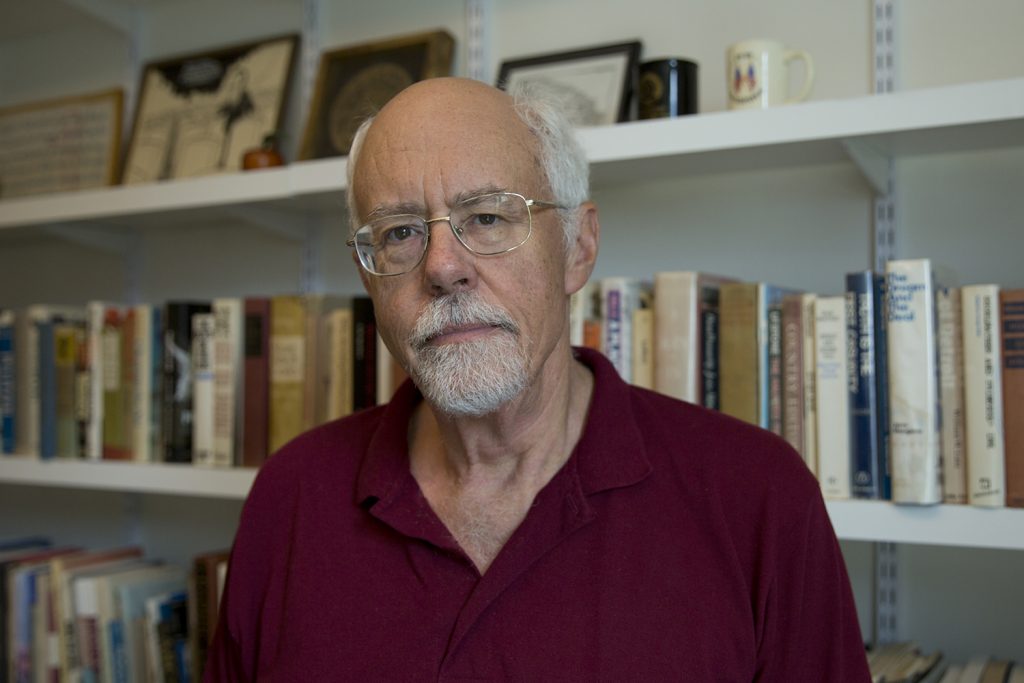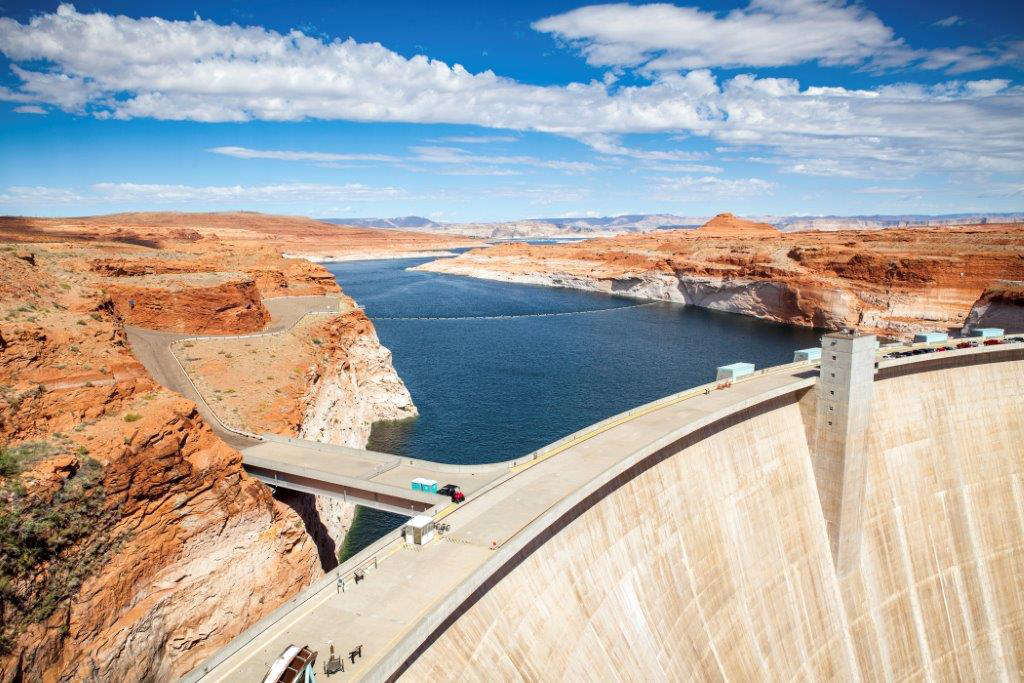 David Brower later recalled his pulse pounding as he stood before the House of Representatives Subcommittee on Irrigation and Reclamation in January 1954. The first Executive Director of the Sierra Club was about to testify against the Bureau of Reclamation’s plan to erect a dam in Colorado’s Dinosaur National Monument.
David Brower later recalled his pulse pounding as he stood before the House of Representatives Subcommittee on Irrigation and Reclamation in January 1954. The first Executive Director of the Sierra Club was about to testify against the Bureau of Reclamation’s plan to erect a dam in Colorado’s Dinosaur National Monument.
The previous summer, Brower had rafted with his sons more than 50 miles of the Yampa River through the park, past its green sloping pastures and ending at its Steamboat Rock monolith. Today, he would do more than praise the reserve’s majestic canyon walls. He wanted to make a bigger impression.
Using a chalkboard and what he called “ninth-grade math,” Brower showed a discrepancy in calculated evaporation rates for proposed dams in Dinosaur and in Utah’s Glen Canyon. The error made a Glen Canyon dam more attractive.
“My point is to demonstrate to the committee that they would be making a great mistake to rely upon figures presented by the Bureau of Reclamation when they cannot add, subtract, multiply, or divide,” he concluded.
The Committee took notice, the Bureau was ruffled, and later a Bureau commissioner admitted the error. It was the first major victory against the onslaught of federal dam projects of the ’50s, and environmentalists were elated.
Two years later, Brower agreed to a compromise: a larger dam in Glen Canyon, but no dam in Dinosaur. He would later call that concession “the greatest sin I ever committed.”

In his book, The Man Who Built the Sierra Club: A Life of David Brower (Columbia University Press 2016),associate professor Bob Wyss of the journalism department offers a new biography of the man who, over 15 years, transformed the Sierra Club beyond its origins in the peaks of California into a national force for the environment.
“[Brower] was an angry trailblazer, responsible more than any other for turning environmentalism from hiking and bird-watching into a social and political force,” Wyss writes in the book.
Rise and fall
Wyss paints Brower as a fearless young man, a mountain climber specializing in the Sierra Nevada’s dangerous peaks who served in the U.S. Army’s 10th Mountain Division in World War II. He didn’t attend college, but “lucked into” a job as an editor at the University of California Press.
Smart and quick-witted, Brower had a way with words, and after several years on the Sierra Club’s Executive Board, the organization hired him as their first full-time director in 1953.
His first major battle, the Dinosaur Monument dam, would go down as a great environmental success story. But the ensuing Glen Canyon dam agreement of 1956 convinced Brower that compromise was folly.
“It’s puzzling why Brower didn’t know how spectacular the place was,” says Wyss. “But he hadn’t been there. He didn’t go there until after the compromise. Then he realized it was a huge mistake.” He fought the dam until 1963, and ultimately lost.
But Brower had many other successes. With friend and Club Board member Ansel Adams, he cooked up the Exhibit Format Series, a set of glossy, glamorous coffee table books depicting great wonders of nature. They cost an outrageous amount of money to produce: the books sold for around $25 in the 1960s – the equivalent of about $200 today. The first featured huge, striking Adams photography, and produced so much revenue that the Sierra Club expanded its budget.
“Brower’s goal was that people would see the books and be so mesmerized that they would join the Club,” Wyss says. “He was probably correct.” In 1952, before he took over the club, it had about 7,000 members; in 1969, when he was dismissed, it had about 70,000.
He also purchased full-page advertisements in prominent newspapers to further the Club’s causes. The most famous, a 1966 ad in the New York Times and other major publications, railed against the proposed flooding of part of the Grand Canyon, blaring: “Should we also flood the Sistine Chapel so tourists can get nearer the ceiling?” The ads prompted the IRS to suspend the organization’s tax-exempt status, causing a stir that Brower relished.
By the late 1960s, Brower had successfully lobbied Congress to pass a wilderness protection bill, stopped two dam projects in the Grand Canyon, and made the Sierra Club the most influential environmental organization in the country.
But his recklessness was catching up with him, and the Sierra Club board grew worried about his financial management. He struggled with book contracts and a desire to open a London office.
When the Board tried to fire him, he was furious, and assembled a slate to effectively take over the board. He lost in a landslide in April 1969. His most vocal opponent was Adams.
This timing could hardly have been worse, says Wyss. 1970 saw the first Earth Day celebration and the creation of the Environmental Protection Agency, and the ensuing years brought the Clean Air Act and the Clean Water Act.
“If Brower could have contained himself a little, he could have been at the head of the most powerful environmental organization at that time, at the height of the movement,” says Wyss. “Who knows what he could have accomplished.”
Behind the man
Wyss speculates that Brower’s outward hubris was influenced by his secretive personal life. Though no journalists had reported it before, many of Wyss’s sources told him that Brower had repeated extramarital affairs with men, and even was fired from a later job for propositioning a man.
Throughout his career, he also fielded accusations of elitism. Brower wanted to preserve natural treasures for their own sake, not for humans to enjoy. When the National Park Service celebrated its 50th anniversary in 1966, he opposed the public campaign. The parks pandered to tourists, he said – at the time, park rangers were notorious for feeding the bears for visitors’ amusement.
“Brower said, ‘This isn’t a carnival,’” says Wyss. “‘It’s a preserve, a place where you should be reverent.’”
Many modern parks would have infuriated Brower, says Wyss, because of the detrimental effects of tourists on the landscape. The National Parks’ mission to make nature accessible to the greatest number of people, Brower said, was incompatible with a conservation agenda.
“If you could walk into to these parks, fine, but if you couldn’t, Brower couldn’t care less,” says Wyss.
This year, as the National Park Service celebrates its 100th anniversary, public versus private use of federal land is still a contentious issue. A standoff between law enforcement and landowners at Oregon’s Malheur National Wildlife Refuge turned deadly in February. But there are more than 100 million acres of wilderness preserve in the U.S. today, which Wyss credits to Brower’s founding efforts.
After leaving the Sierra Club, Brower went on to found the environmental advocacy organization Friends of the Earth. Fifteen years later, he was fired from that role.
“His willingness to make a bold statement or a bold plan was also his greatest weakness,” says Wyss.
Today, Wyss says the environment is in greater danger than ever because of climate change. And despite his flaws, Wyss says, maybe we could use a zealot like Brower today: “He foresaw a lot of the consequences of man on the environment as early as the 60s and 70s. He was truly ahead of his time.”



